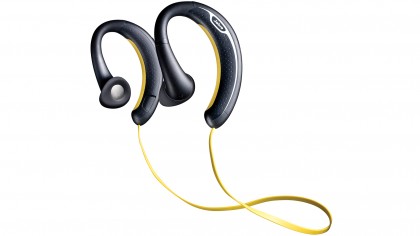10 best running gadgets: the top tech for training
Get on track with these gadgets for runners
However, for us it's the expansive sound quality that puts this Walkman in pole position, despite the headphones supplied being less than brilliant. Transferring files is a simple drag 'n' drop process, and was painless using a Mac.
A cheaper alternative is something like the Sansa Clip+, but you won't find many tiny MP3 players that sound as good as this Walkman.
5. Jabra Sport - £90/US$100/AU$150

They may not have caught on with commuters, but the concept of Bluetooth headphones is arguably at its best as a sports technology.
Don't fall prey to the 'cable-free' argument - the link to a smartphone is replaced by a meaty cable that joins the two earpieces, and there's a cable for regular recharging, too - but the Jabra Sport manages to be both comfortable and reliable despite the chunky design. It does take a little getting used, but since it's sweat-proof and instantly links to a phone (once initially paired), it's well prepared.
Meanwhile, sound quality - not exactly Bluetooth headphones' best trait - is thoroughly respectable, and certainly good enough for a run.
6. Adidas Energy Boost Shoes - £110/US$150/AU$180

They might look worryingly similar to polystyrene, but the soles of these new Adidas Energy Boost trainers are said to revolutionise the way you run. The new Boost foam - which is actually thermoplastic polyurethane - is used for its ability to bounce back into shape after every step, thereby reducing the strain on joints and muscles.
An 'energy returning boost' is the key concept here, though just as important is comfort, with a snug 'techfit' and a super-lightweight construction.
Sign up for breaking news, reviews, opinion, top tech deals, and more.
If you want to stay on-brand, you might consider pairing the shoes with the Adidas miCoach Speed Cell and app.
7. Nike+ FuelBand - £130/US$150 (around AU$213)

An accelerometer worn on a wrist that tracks how active you are throughout the day, Nike's FuelBand differs from the Fitbit One and other rivals with its sheer style and system of monitoring achievements on your iPhone (or at nikeplus.nike.com). Some doubt these gadget's usefulness, but just having something telling you how active you are each day is an astonishingly powerful motivator - the truth obviously does hurt.
What doesn't hurt is that the Nike+ FuelBand just looks gorgeous, with its simple black rubbery exterior and single band of silver at the clasp. Press the single button on the FuelBand and a system of LEDs light up on the face. And unlike pretty much every other gadget we've seen, these lights really do look as if they're embedded into the band, and the effect is mightily pleasing.
Key metrics - number of steps taken, calories burned, and the time - are displayed for around a week on a full charge. There's no GPS to track runs, but it could be paired with the free Nike+ Running app on an iPhone.
Read our full Nike+ FuelBand review
8. Polar RC3 GPS with Heart Rate Monitor - £200/US$260/AU$300

Anyone with running experience will tell you that understanding your own heart-rate is the best way to understand running, and Polar's latest sports watch takes full advantage of that by adding GPS, too.
An all-in-one GPS training computer in eye-catching red and orange colour, the super-light 58g (2oz) Polar RC3 is aimed at runners and cyclists. Speed, distance, altitude and route are calculated using GPS satellites (there's even a 'back to start' feature, though that's only of use if you weren't lost en route), but it's the Smart Coaching features that are most impressive. Zone Optimizer mode adjusts your heart rate zones for every training session, based on your current physiological condition, while Fitness Test puts you through five minutes of pain to track your progress.
A Running Index feature compares running efficiency based on your heart rate and speed, giving you an estimated finish time, while all data can be uploaded to polarpersonaltrainer.com for analysis. And, yes, you can share all of this on Facebook, you big show-off.

Jamie is a freelance tech, travel and space journalist based in the UK. He’s been writing regularly for Techradar since it was launched in 2008 and also writes regularly for Forbes, The Telegraph, the South China Morning Post, Sky & Telescope and the Sky At Night magazine as well as other Future titles T3, Digital Camera World, All About Space and Space.com. He also edits two of his own websites, TravGear.com and WhenIsTheNextEclipse.com that reflect his obsession with travel gear and solar eclipse travel. He is the author of A Stargazing Program For Beginners (Springer, 2015),